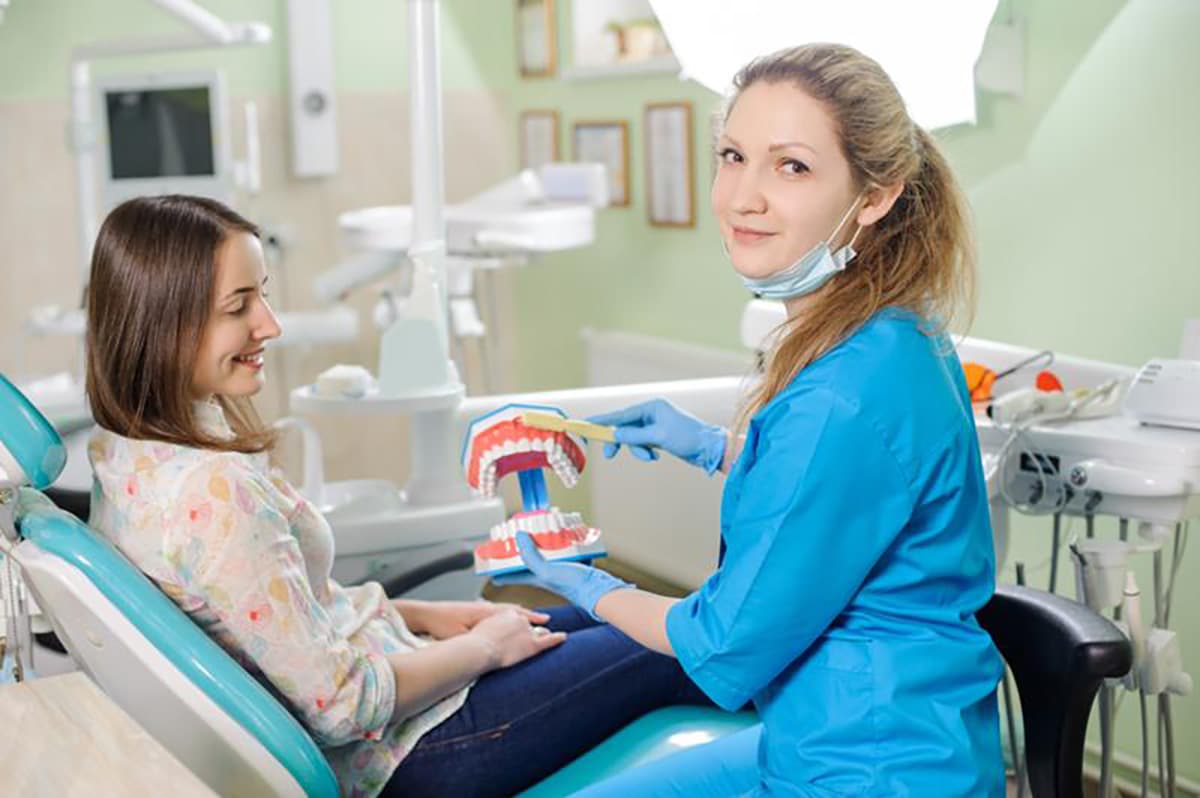5 Common Symptoms Of Cavities

In a perfect world, good oral hygiene would be enough to stave off cavities. Unfortunately, even people who brush and floss regularly are at risk for cavities and tooth decay. It’s important that people know how to recognize the symptoms of cavities, so that they can receive the proper treatment before the damage spreads. Here are a few of the most common symptoms of cavities.
Toothache
Perhaps the most common symptom of a developing cavity is pain. Toothaches are almost always signs that something isn’t right. Sometimes the pain is located in the tooth itself, and sometimes it’s felt most strongly in the surrounding gums. The pain can be a persistent throb, or it could be an acute pain that occurs whenever the tooth is touched. When you experience persistent toothaches in one isolated tooth, it may be time to schedule a dentist appointment.
Strange Taste In The Mouth
Cavities occur when the acids in the mouth eat away at tooth enamel, leaving behind tiny holes. These small holes can be hard to reach with toothbrushes and floss, and they can trap bacteria and food particles. If bacteria builds up in the mouth, it can leave behind an odd taste or odor. This effect will be especially noticeable in the mornings. While cavities aren’t the only cause of bad breath or unpleasant mouth tastes, these are possible consequences of untreated cavities, and they may be signs of tooth decay.
Heightened Sensitivity To Temperature
Inside each tooth is a nerve. When cavities are in the initial stages, acid simply chips away at the outer tooth enamel. Over time, however, the acid can cause so much decay that the nerve is exposed. When the cavity gets close to the nerve or exposes it entirely, it can lead to heightened sensitivity to extreme temperatures. Drinking a hot cup of coffee or a glass of ice water may become painful. When hot and cold temperatures become painful, it’s often a sign that the cavity is long past due for treatment.
Normal Brushing Leads To Bleeding
Everyday tooth brushing shouldn’t lead to bleeding gums. If the gums are bleeding consistently and at various locations, it’s more likely to be a sign of too vigorous brushing or a gum disease than a cavity. If the bleeding only occurs at one location, however, it may be caused by a cavity near the gum line. When this occurs, you should use gentle tooth brushing methods until you can have the problem inspected by a dentist.
Noticeable Discolorations
There are several different types of tooth discoloration, and not all of them are indicative of growing cavities. Sometimes, brown and black spots are stains, rather than evidence of decay. When you notice new discolorations, however, it’s usually best to get them evaluated by a dental professional. This is especially true if you notice abscesses in the surface of teeth, or find that a discolored spot is unusually soft when pressed. When the surface of the tooth is soft or sticky, it’s usually a sign of decay.
The content on this blog is not intended to be a substitute for professional medical advice, diagnosis, or treatment. Always seek the advice of qualified health providers with questions you may have regarding medical conditions.
